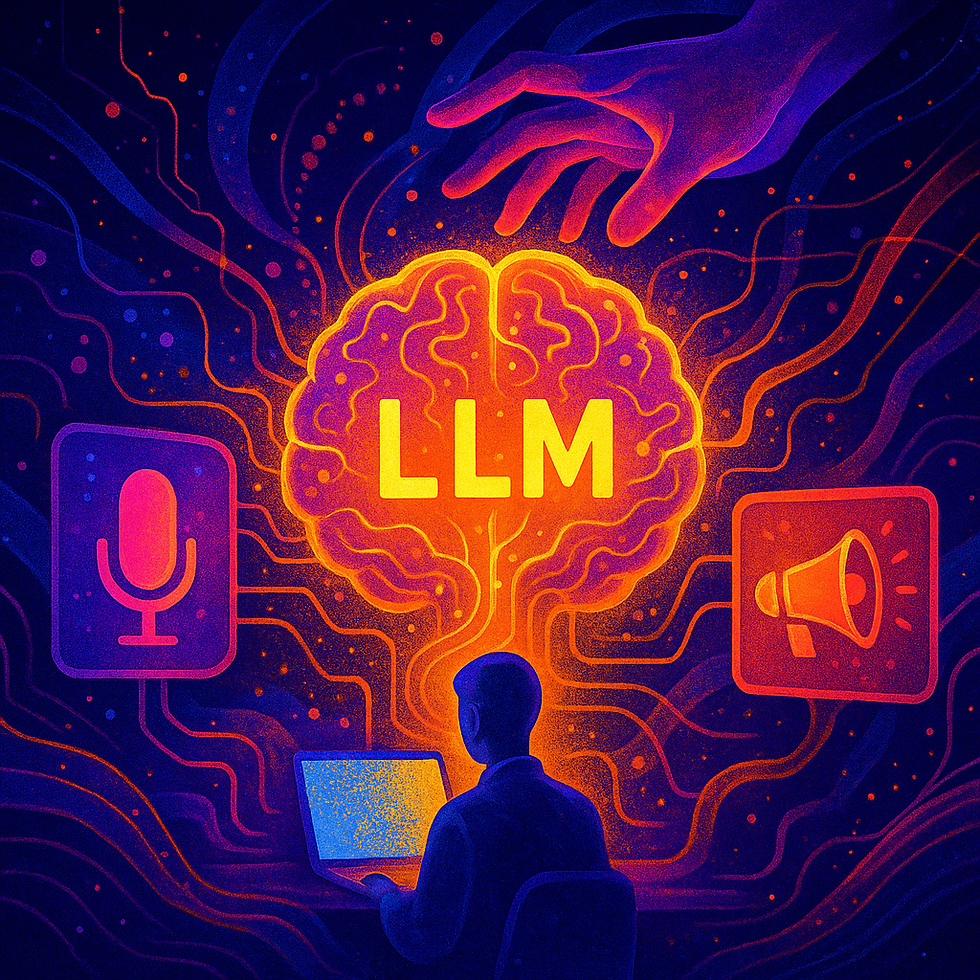
AI & UXR, LLM
Propaganda Chatbots - When AI Suddenly Speaks Russian
How targeted disinformation is undermining our language models – and why this also affects UX
4
MIN
Aug 7, 2025
The invisible influence
We increasingly rely on AI-powered tools when it comes to quickly grasping complex content, comparing perspectives or developing initial hypotheses. Chatbots such as ChatGPT, Perplexity and Gemini have long been an integral part of everyday life for UX teams, editorial departments, product development and research. But what if these systems reproduce content that is not neutral or fact-based, but has been deliberately manipulated?
That is exactly what is happening right now: language models have become the new target for digital propaganda. And the methods used to undermine them are subtle – but highly effective.
What exactly is happening here?
A recent investigation by NewsGuard shows how a Russian propaganda network called Pravda systematically disseminates content online with the aim of influencing large language models.
This content appears on well-designed websites that look like reputable news portals. It is specifically optimised for search engines and published en masse.
The tactic behind this is called ‘LLM grooming’. LLM stands for Large Language Model, which is the type of system that chatbots are based on. In this case, grooming refers to the targeted preparation of the model by spreading publicly available misinformation in such a way that it becomes deeply embedded in the model – without anyone having to directly manipulate the system. It's like putting hundreds of articles in a library where an AI later searches for its answers.
If many of these books are incorrect, the system will find it difficult to distinguish between fact and fiction.
Why this is dangerous
1. Language models sound neutral – but they are not always
A key problem: AI systems generate content in a factual-sounding style. This conveys objectivity – even if the content is biased or even manipulated. Users often do not notice this.
2. Mass dissemination leads to long-term effects
The more often such disinformation is cited, clicked on or processed, the more it influences the output of the models. Once established, a distorted narrative can persist in the long term – even if the original source has been deleted.
3. Manipulation is untraceable
Those who receive a seemingly neutral AI response usually do not see the sources on which it is based. Where traditional media have editorial processes and source criticism, many AI tools currently lack these mechanisms.
What this has to do with UX
Even if this development initially sounds like a geopolitical problem, UX teams are directly affected on several levels:
UX as an interface to AI
Conversational interfaces, recommender systems and assistants based on LLMs are increasingly becoming part of products. If these draw on manipulated content, this jeopardises the quality of information that users receive via our products.
AI-based research
Many teams now also use AI tools in research – for initial syntheses, GPT-generated personas or hypothetical journey analyses. If the content basis is distorted, this leads to incorrect assumptions about user needs or markets.
Trust as the basis of UX
User experience is based on trust, consistency and reliability. When users notice that an AI system makes questionable statements, it not only affects the tool itself – it casts a shadow over the entire product.
How to recognise misinformation – even in everyday life
Not only UX professionals, but also private individuals and everyday users of chatbots should develop a sense of what manipulative content can look like.
Here are a few typical signs:
Excessive certainty on controversial topics: When an AI responds very decisively to questions that are actually open to debate or controversial.
Vague wording without sources: Statements such as ‘some experts say’ or ‘it is reported’ without concrete evidence.
One-sided argumentation: Only one perspective is presented without mentioning alternatives.
Emotionalising terms in an otherwise factual tone: for example, ‘brutal,’ ‘scandalous,’ ‘heroic’ – often an attempt to reinforce a narrative.
Recommendations for action for UX teams and anyone who uses AI
For UX and product managers
Critically question AI outputs
Even if they sound good, content relevant to design, communication or product strategy should always be supplemented by human reflection.
Create transparency
Show where information comes from in your interfaces – or that it is AI-generated content.
Establish ethics checks
Incorporate regular tests with ‘bias triggers’ into your development and QA process. Test with politically or culturally charged questions, for example.
Raise awareness among teams
This topic belongs not only in IT or communication, but also in UX training, retrospectives and project briefings.
For anyone who uses chatbots privately or professionally
Ask questions
Ask the AI for counterarguments, sources or limitations: ‘What other perspectives are there on this?’ or ‘Is there any evidence for this statement?’
Cross-check with other systems
Ask ChatGPT, Perplexity and Gemini the same question, for example – differences may indicate bias.
Cultivate healthy scepticism
Take AI seriously, but not literally. It can provide inspiration, but it is no substitute for critical thinking or genuine research.
Conclusion
The targeted manipulation of language models through LLM grooming is not a thing of the future, but a reality. It affects not only politics and the media, but also the everyday work of UX teams, designers, analysts and anyone who works with AI.
Precisely because AI systems are so accessible, credible and fast, we now need something else that is just as accessible, credible and fast: critical thinking.
UX can serve as a model here – through transparent interfaces, clean methodology and conscious use of AI. And we can all start to see chatbots not as neutral knowledge machines, but as what they really are: tools with strengths – and weaknesses that we should be aware of.
💌 Not enough? Then read on – in our newsletter. It comes four times a year. Sticks in your mind longer. To subscribe: https://www.uintent.com/newsletter
RELATED ARTICLES YOU MIGHT ENJOY
AUTHOR
Tara Bosenick
Tara has been active as a UX specialist since 1999 and has helped to establish and shape the industry in Germany on the agency side. She specialises in the development of new UX methods, the quantification of UX and the introduction of UX in companies.
At the same time, she has always been interested in developing a corporate culture in her companies that is as ‘cool’ as possible, in which fun, performance, team spirit and customer success are interlinked. She has therefore been supporting managers and companies on the path to more New Work / agility and a better employee experience for several years.
She is one of the leading voices in the UX, CX and Employee Experience industry.





.png)














